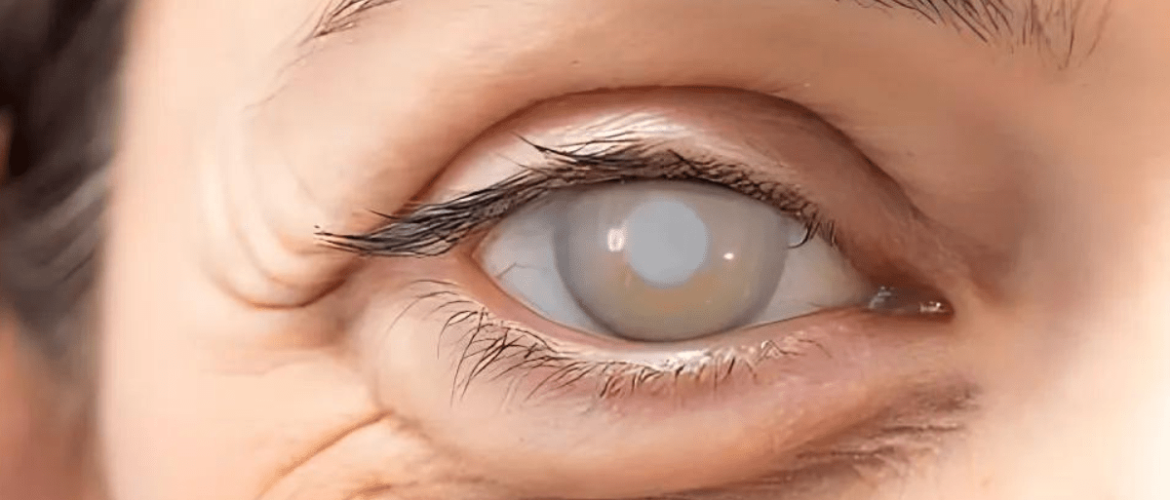What is Catract?
A cataract is the most common cause of treatable vision problem at old age, worldwide. It causes clouding of the clear natural crystalline lens which reduces the visual clarity. It is like looking through a frosty window.
Most cataracts are old age-related also termed senile cataracts and usually develop in both eyes. But sometimes they may affect only one eye. Over a period of time cataract will affect your vision. If the reduced vision interferes with daily routine activities, you might need to a cataract surgery.
What Causes Cataracts?
The crystalline eye lens is comprised of water and proteins. The protein helps keep the lens clear and lets light pass through it. Cataract causes breakdown of these proteins which causes cloudiness. Besides age, there are several underlying causes of cataracts. These include
- Ultraviolet radiation from sunlight and other sources
- Diabetes
- Smoking
- Prolonged use of corticosteroid medications
- Ocular trauma
- Ocular infection/ inflammation
- Previous eye surgery
- Radiation therapy
What are the symptoms of cataracts?
The rate of cataract progression in the eyes may vary. , One may have visual symptoms in one eye and normal vision in the other. Besides, one may experience the following symptoms:
- Cloudy vision
- Difficulty in seeing at night or in low light
- Light from the sun or a lamp seems too bright or glaring.
- Increased sensitivity to light.
- Difficulty in driving during the night due to glare caused by headlights.
- Visual halos around bright lights.
- Double vision.
- Colors may appear faded.
- Frequent change of glass prescription
What are cataract related risk factors?
Factors that can increase the risk of cataracts include:
- Old age
- Heavy alcohol consumption
- Smoking
- Obesity
- Previous eye injuries
- Family history of cataracts
- Excess exposure to sunlight
- Diabetes
What are the different types of cataracts?
Following are the common types of cataracts:
- Nuclear cataracts – Affects the center of the eye’s lens, gradually worsening and affecting vision.
- Cortical cataracts – Are wedge-like and begin near the edge of the lens progressing toward its center.
- Congenital cataracts – Are lens opacities that are present at birth in one or both eyes. They can be very small and don’t always affect the vision, but if they are more severe, they have to be surgically removed.
- Trauma-induced cataracts – Occur after an eye injury and often develop into a flower-petal or “rosette” shape.
- Posterior subcapsular cataracts – Affect the central back surface of the lens, right in the path of light. These tend to develop faster than the others.
How is a cataract diagnosed?
Eye doctors can use different tests to diagnose cataracts.
- Visual acuity test – The eye doctor willask the patient to read letters from a distance to assess the sharpness of vision.
- Refraction – The eye doctor may do refraction to determine the degree of refractive error and if the glass prescription has changed and vision can no longer be corrected to 6/6, it’s possible there may be a cataract developing.
- Slit-lamp exam – This enables the eye doctor to closely examine the eye under high magnification for a detailed assessment of the cataract while also ruling out any other disease affecting the vision.
- Retinal exam – Finally, the doctor may put pupil dilating eye drops to examine the retina and optic nerve in the back of the eye. A dilated eye exam provides the best view of any cataract formation on the lens.
How to prevent cataracts?
There are no studies to prove how to prevent cataracts or slow its progression. But several strategies may be helpful, including:
- Regular eye examinations – Eye examinations at regular intervals can help detect cataracts and other eye problems at their earliest stages
- Quit smoking – Studies have shown that a person who was/is smoking is more likely to develop cataracts than someone who hasn’t smoked. Make all effort such as medication or counselling to quit smoking.
- Manage other health problems – Diabetes or other medical conditions can increase the risk of cataracts. Following a treatment plan can help reduce the chances of developing cataracts.
- A healthy diet – Including plenty of fruits and vegetables have been found to lower the risk of cataracts.. Fruits and vegetables have many antioxidants, which help maintain the health of your eyes.
- Sunglasses – Sunglasses that block ultraviolet B (UVB) rays may reduce the eye exposure to these rays which may contribute to the development of cataracts.
- Reduce alcohol use – Excessive alcohol use can increase the risk of cataracts.
What is the best treatment for cataracts?
Initially, a simple change of the eyeglass prescription or appropriate lighting may restore acceptable vision. If a cataract affects the quality of life, surgery is the most effective treatment.
Conclusion
We at M M Joshi Eye Institute are proud to have the most skilled surgeons and most advanced technologies available today to perform cataract surgery. We use the most advanced phacoemulsification technique thathelps patients achieve the best possible vision after surgery.
The phacoemulsification cataract surgery done at MM Joshi Eye Institute is safe, painless, stitchless, patchless, and provides a quicker recovery of vision. To achieve extremely accurate and predictable results, the institute offers Bladefree Femtosecond Laser-assisted Cataract Surgery or Robotic Cataract Surgery. The surgical steps are assisted by femtosecond laser incisions that are precise and reproducible, and free of human errors.
With the availability of these technological advances, we strive for individual visual needs that allow a life lived to its full potential.

No comments yet.